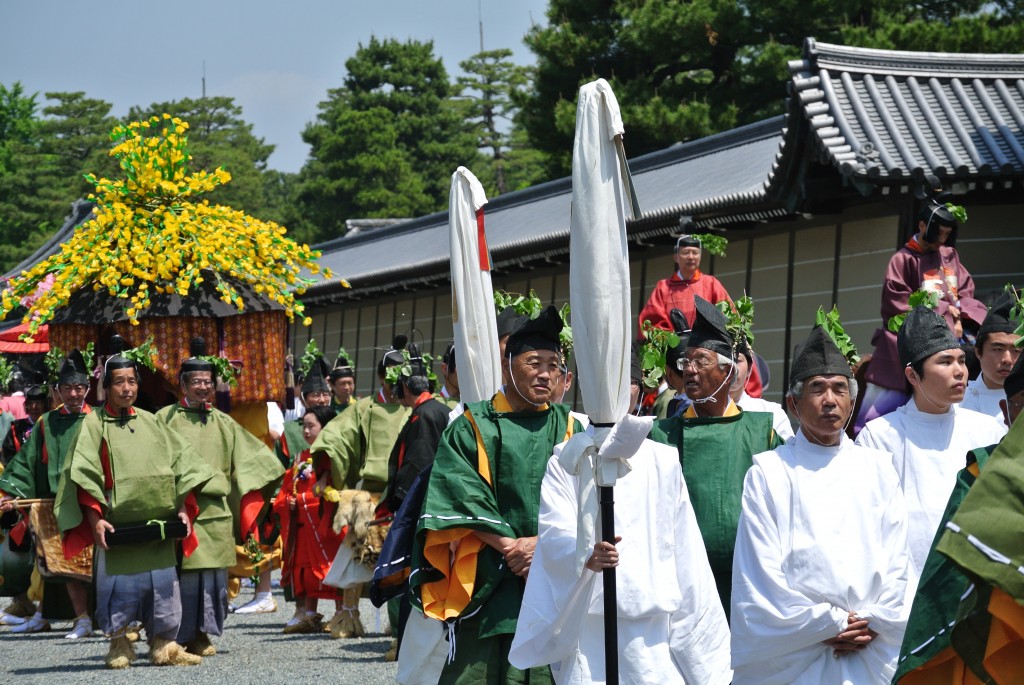
Setting off from Gosho
Aoi Festival took place today in glorious sunshine. The festival is said to have originated in the sixth century when Emperor Kinmei ordered it in order to placate the kami that were causing a series of disasters. It’s supposed to take place on May 15, but yesterday was pouring with rain and all those gorgeous costumes would have been ruined. I thought the postponement would reduce the numbers watching, but the route from the Former Imperial Palace (Gosho) to Shimogamo Jinja and then on to Kamigamo Jinja was packed most of the way.
This year I caught the beginning of the parade at 10.30 in Gosho and the end of the parade at Kamigamo from 3.30. Both are in open and verdant settings, fitting for an ancient festival. The whole event centres around the procession of the imperial messenger to present offerings to the kami at Shimogamo and Kamigamo. There are rituals involved, but as far as the public’s concerned it’s all about the parade. There are over 500 people, some 40 horses and 2 oxen involved, and everyone wears aoi/katsura leaves, thought in the past to be a preventative against disease. (Aoi is a type of hollyhock.)
it’s a long colourful affair that takes an hour in all to pass by, with frequent stoppages. The procession is divided into five main sections. Guardsmen at the front and rear, officials in charge of the offerings, horsemen, and women and children, including the Saio (imperial princess-priestess). It’s the women and children that get all the cameras snapping.
*******************************************************************************************************
For more about the significance of the Aoi Festival, see the pre-events Mikage Festival and Miare sai. To read further details about the festival itself, try the Wikipedia pages or this page of small pictures with accompanying explanations.
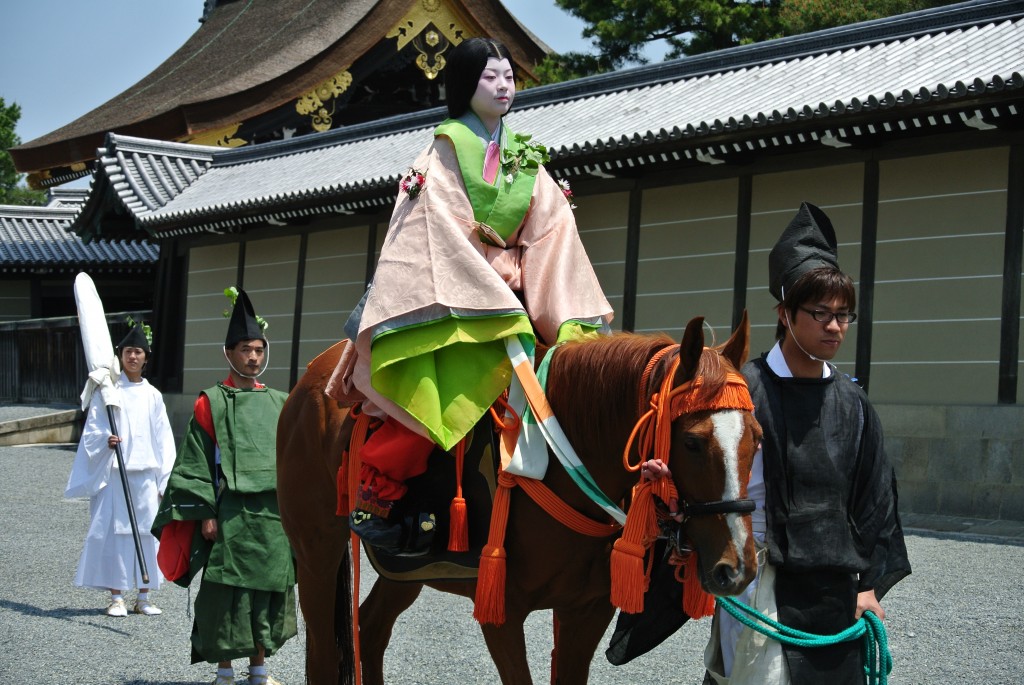
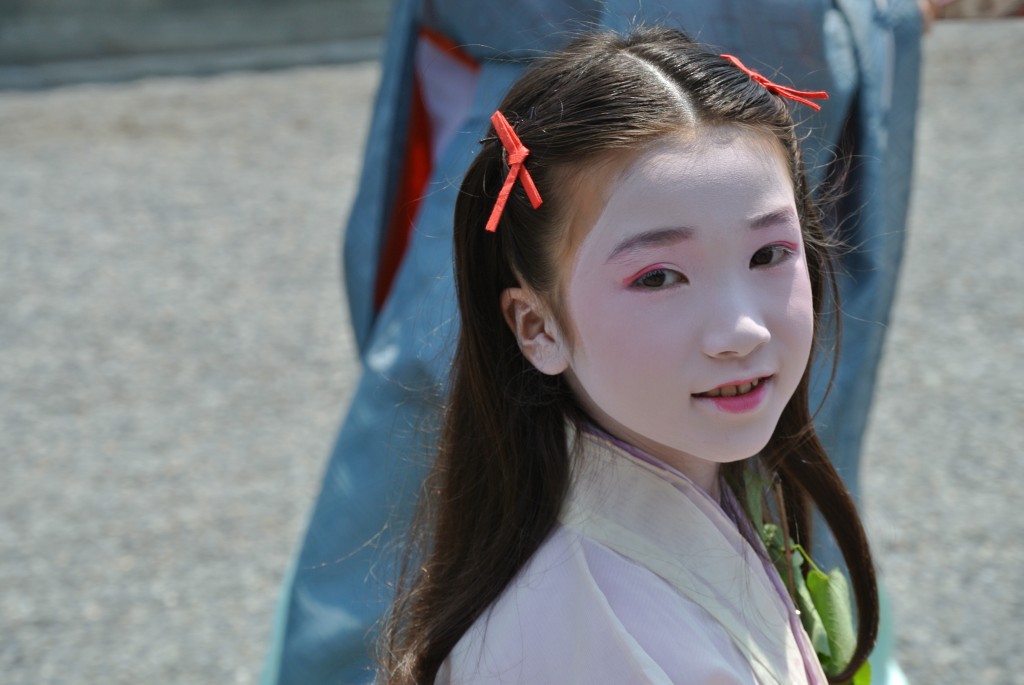
All dressed up and somewhere to go...
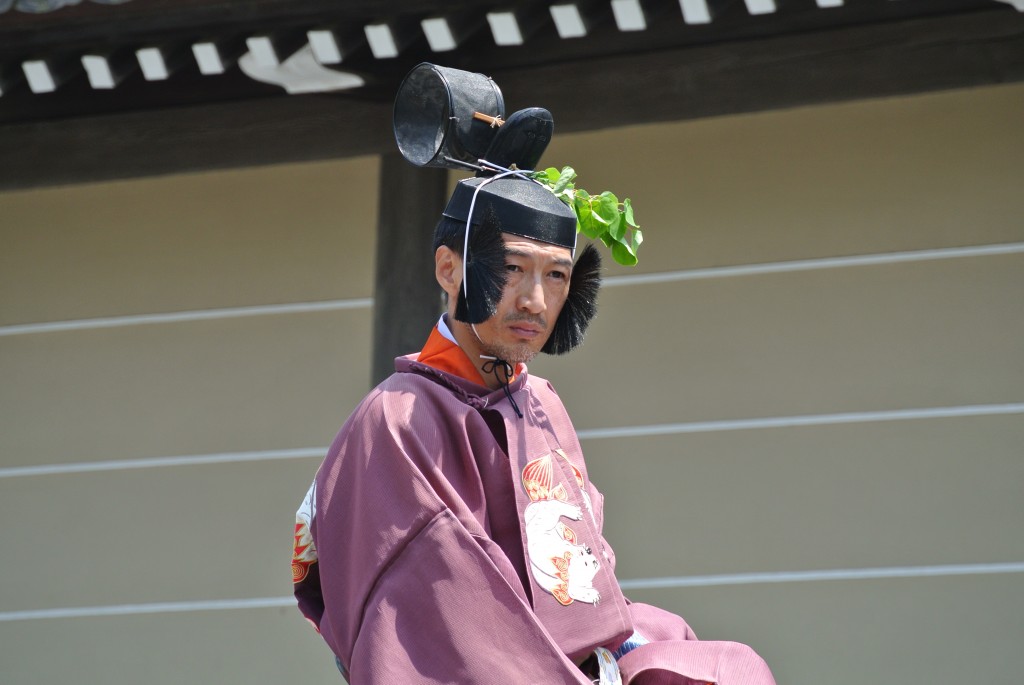
A dapper looking horserider
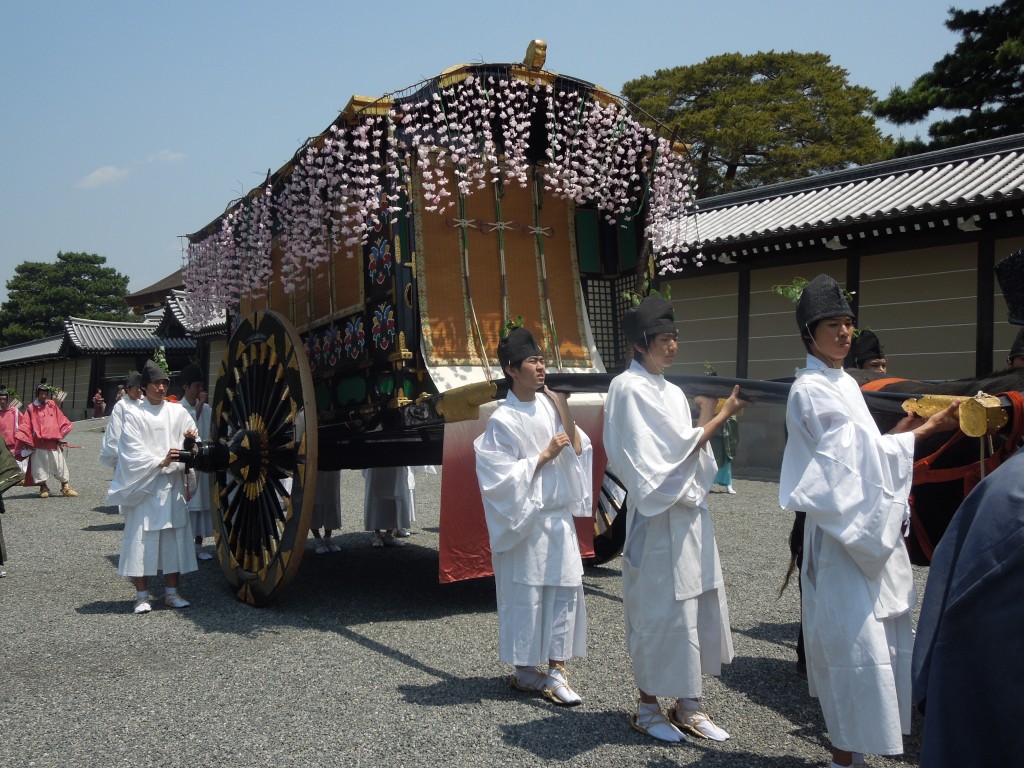
Ox-cart proceeding without any horse power
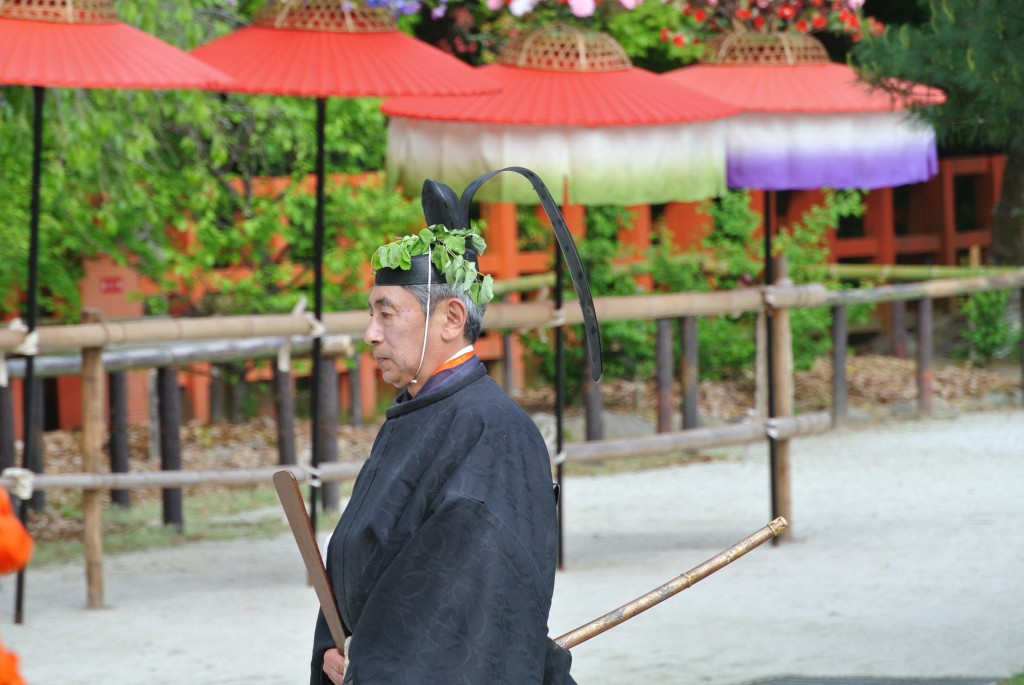
A very dignified imperial messenger heading the procession
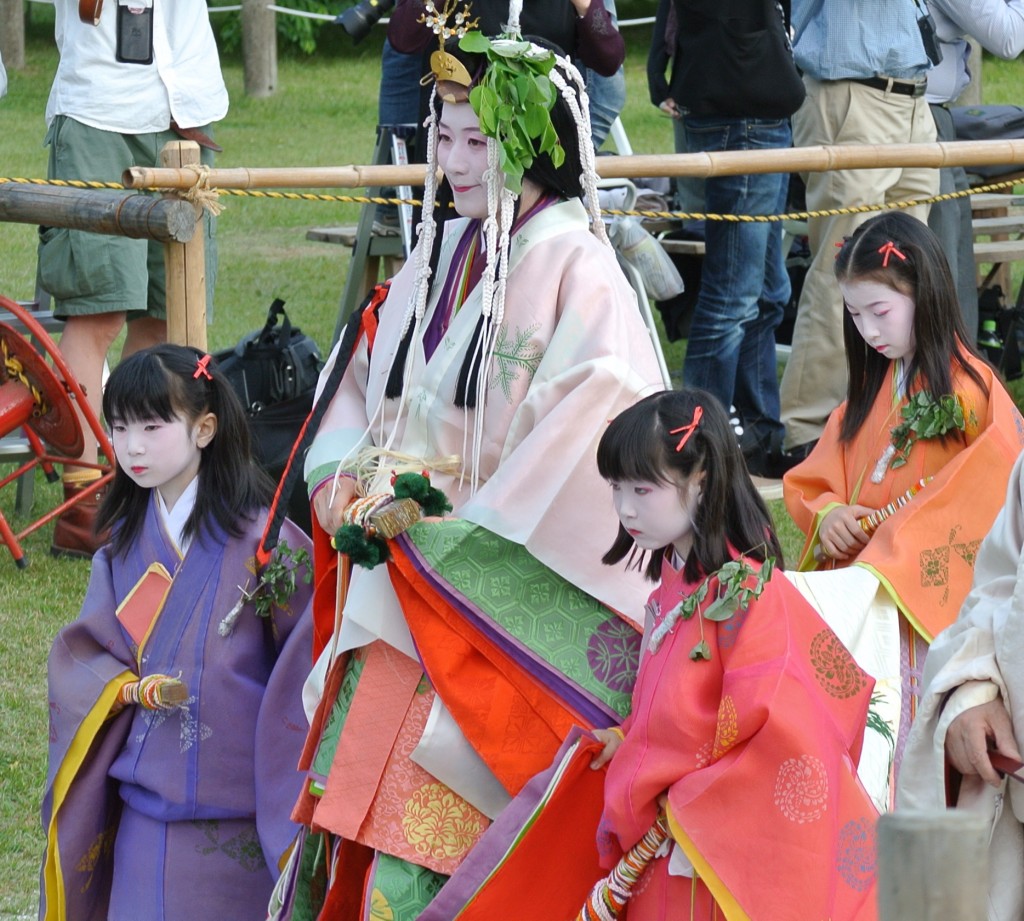
Playing the part of the former princess-princess Saio
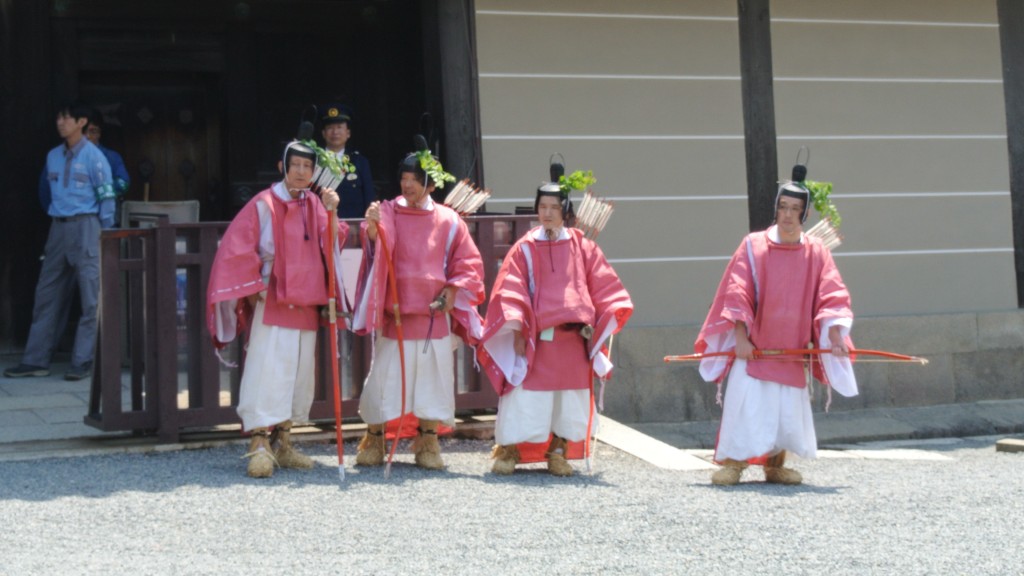
Armed guards, past and present, at the starting point in Kyoto's Former Imperial Palace
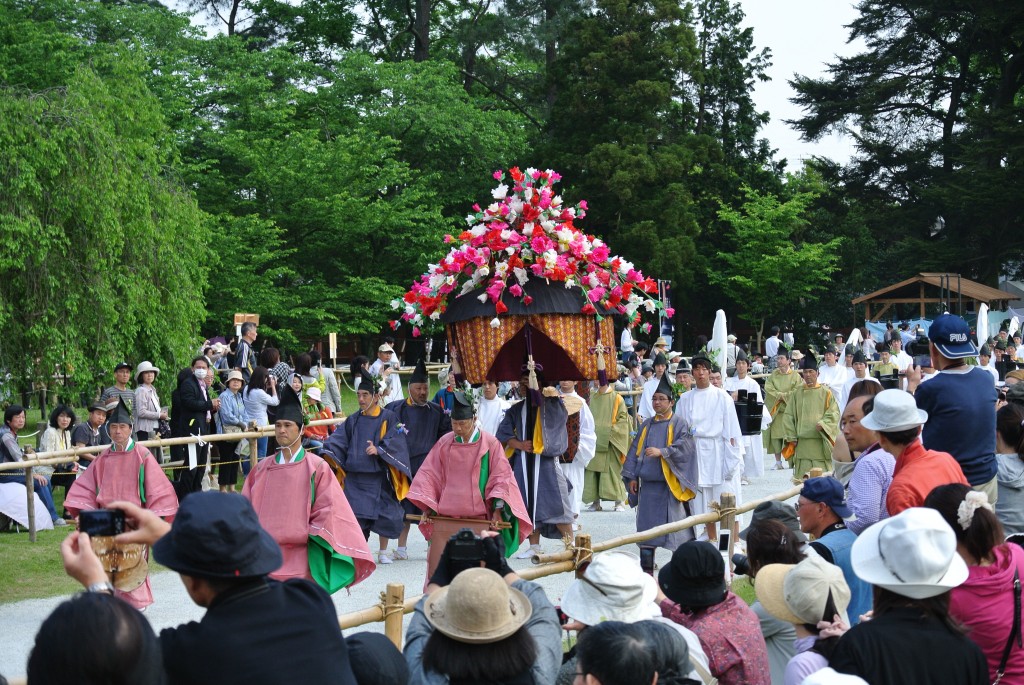
Arriving at Kamigamo Shrine, end point for the festival, some five hours later

A correspondent has written in to say that Kyoto Shinbum carried an article to the effect that the aoi plant has become increasingly rare in recent years. As a result volunteers have been enlisted to search for them, and as part of the community outreach of the shrine local schools have become involved in raising the plants specially for use in the ceremony.